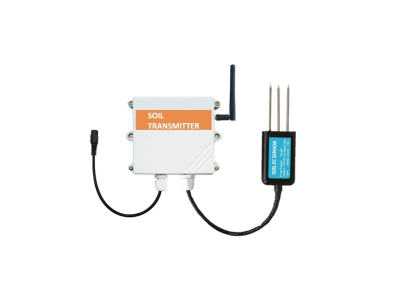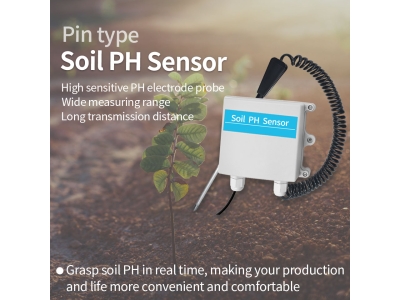The role of soil sensors in sustainable agriculture is becoming increasingly important as we strive to create a greener and more sustainable future. The use of soil sensors can provide farmers and growers with critical information about the health and condition of their soil, helping them make informed decisions about crop management. In this article, we will explore the benefits of using soil sensors in sustainable agriculture, the different types of sensors available, and how farmers and growers can integrate them into their operations.
Benefits of Using Soil Sensors in Sustainable Agriculture
Soil sensors offer several benefits in sustainable agriculture, including:

Improved crop yield and quality: Soil sensors can provide real-time data on soil moisture, temperature, and nutrients, enabling farmers and growers to optimize crop growth conditions and improve yields and quality.
Reduced water usage: Soil sensors can help farmers and growers conserve water by providing information on soil moisture levels, allowing farmers to reduce irrigation where it is not needed.
Increased efficiency: By using soil sensors, farmers can make quicker and more informed decisions about fertilization, irrigation, and other crop management practices, resulting in increased efficiency and reduced costs.
Reduced environmental impact: The use of soil sensors can help reduce the environmental impact of farming by reducing the amount of water and fertilizer needed to grow crops, thereby improving soil quality and preventing nutrient runoff.
Types of Soil Sensors
There are several types of soil sensors available, each with its own unique set of capabilities. These include:
Moisture sensors: Moisture sensors measure soil water content and provide information on when to irrigate crops.
Temperature sensors: Temperature sensors monitor soil temperature, which affects seed germination, root growth, and nutrient uptake.
Nutrient sensors: Nutrient sensors measure soil pH and nutrient levels, helping farmers to determine when to apply fertilizers and how much to use.
Electrical conductivity sensors: Electrical conductivity sensors measure the salinity of the soil, which affects the growth of crops and the uptake of nutrients.
Gas sensors: Gas sensors measure the concentration of gases in the soil, such as carbon dioxide and oxygen, which can affect plant growth.
Integrating Soil Sensors into Sustainable Agriculture Practices
The integration of soil sensors into sustainable agriculture practices can be accomplished through several key steps:
Selecting the right sensors: Farmers and growers should carefully evaluate their operations and determine which types of soil sensors will provide them with the most useful data.
Installing sensors: Sensors should be installed at appropriate depths and locations to ensure accurate data collection.
Collecting data: Data should be collected regularly to monitor soil health and detect changes that may require intervention.
Analyzing data: Data collected from soil sensors should be analyzed to identify trends and patterns that can inform crop management decisions.
Acting on data: Farmers and growers should use the insights gained from soil sensors to adjust crop management practices, such as irrigation and fertilization, to achieve better yields and reduce waste.
Challenges and Future Outlook
While soil sensors offer significant benefits in sustainable agriculture, there are several challenges that must be addressed to ensure their effective use. One challenge is the cost and complexity of installing and maintaining sensors, especially for small-scale farmers. Additionally, there is a need for more research to develop algorithms and software that can interpret the data collected by sensors and provide actionable insights to farmers.
Despite these challenges, the future outlook for soil sensors in sustainable agriculture is promising. As technology advances, sensors are becoming more affordable and easier to install and maintain. Additionally, the integration of soil sensor data with other technologies, such as precision farming and machine learning, holds the potential to revolutionize crop management practices and lead to more sustainable agriculture overall.
Conclusion
Soil sensors have an essential role to play in sustainable agriculture, providing farmers and growers with critical data on soil health and conditions. By using soil sensors, farmers can optimize crop growth, reduce water and fertilizer usage, increase efficiency, and minimize their environmental impact. The integration of soil sensors with other technologies holds the potential to revolutionize crop management practices and lead to a more sustainable future. However, there are challenges that must be addressed to ensure the effective use of soil sensors in agriculture.






